Articles
|
Making Model TreesMaking Model Treesby Andy Slater Ready made trees are commonly available from model shops however a greater diversity (and a financial saving) can be made by creating your own. It is also possible to buy armatures cast in white metal which can be bent to form the branches of the tree, and materials which can be used to produce foliage but again, it is possible to make a financial saving by creating trees from scratch. There are basically two methods of construction: one for conifers and the other for deciduous trees. Conifers (the bottle brush method)
Hairy string it the traditional source of material for the fibre strands however this is not so easy to find as it once was. Another option is to cut the bristles from a cheap sweeping brush and a single brush head will yield a fair sized forest. After the wire has been twisted into a spiral, the top is snipped off and the fibres trimmed. Foliage can now be added as described for deciduous trees however for conifers all that is usually required is to dip the bottle-brush tree into a can of paint and shake off the excess. Deciduous TreesDeciduous trees can be somewhat more difficult to model. The images below show three native UK trees: the Common Oak, the Horse Chestnut and the Sycamore as they appear in winter i.e. without foliage. 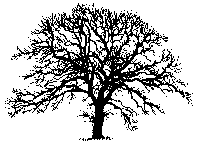
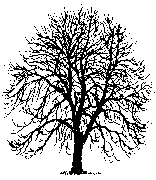
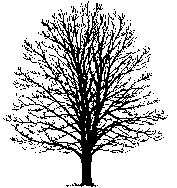
It can be seen that each tree has a unique 'character' which is determined by such factors as:
In combination these factors make some trees look angular while other have an upswept or hanging character. The info section of this site has a page with illustrations of a good number of broad-leafed trees native to the UK and a quick glance will give an appreciation of the variety available. In some ways this variety works in the modellers favour because provided that you are not wanting to model a specific variety of tree it is not difficult to construct something that looks like 'a tree of some kind'. However if you look at the illustration of the 'finished' wire tree further down this page it should be fairly obvious how the look of it may be improved. In this instance however the 'tree' is meant to illustrate the method of construction rather than a realistic looking model.
Foliage can now be glued onto the branches. Several materials are commonly used such as sawdust, tea leaves, lichen and torn up plastic scouring pads and foam rubber. These materials can be coloured before application or afterwards as appropriate. An airbrush will probably prove particularly useful in the case of the latter. This article is copyright (C) Andy Slater and is used here with permission |
|
|
Copyright (C) Webspace Ltd All rights reserved. |
||

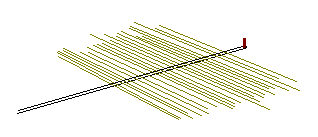 The picture to the right illustrates this method of construction. A
loop of wire is anchored around a headless pin with the other ends of
the wire inserted into the chuck of a hand drill. Strands of fibrous
material are arranged between the wires and the drill is slowly rotated
such that the wire becomes twisted and traps the fibre strands.
The picture to the right illustrates this method of construction. A
loop of wire is anchored around a headless pin with the other ends of
the wire inserted into the chuck of a hand drill. Strands of fibrous
material are arranged between the wires and the drill is slowly rotated
such that the wire becomes twisted and traps the fibre strands.
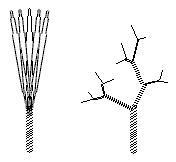 The
starting point for making a model deciduous tree is to take several
loops of wire and twist them together to form the trunk. The loose
strands are then split into two or three groups which are twisted to
form branches. These groups are further divided and twisted until you
end up with single pieces of wire forming 'twigs'.
The
starting point for making a model deciduous tree is to take several
loops of wire and twist them together to form the trunk. The loose
strands are then split into two or three groups which are twisted to
form branches. These groups are further divided and twisted until you
end up with single pieces of wire forming 'twigs'.